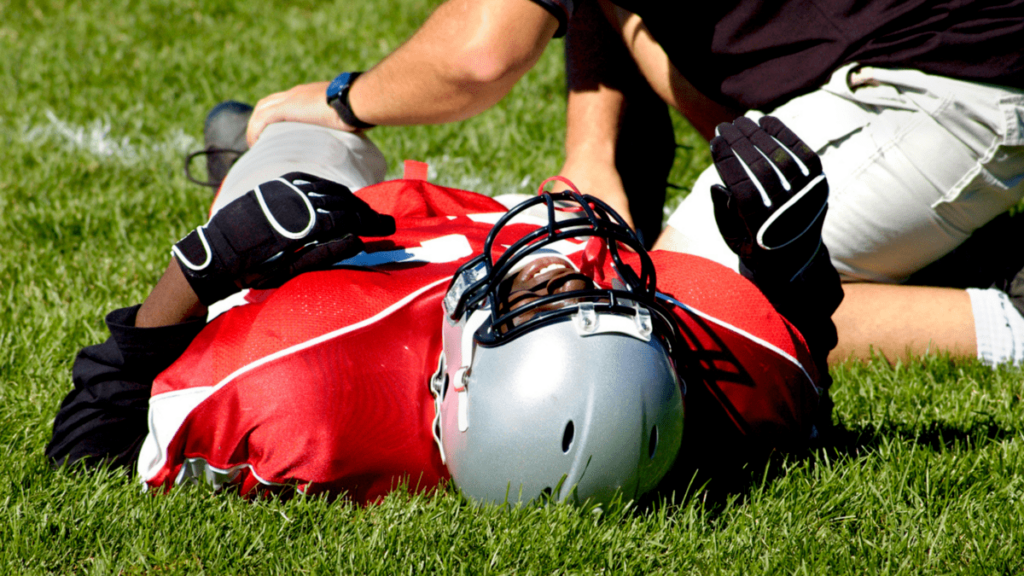- News
- Sport Injury Liability: Legal Resources and Compensation for Athletes
Sport Injury Liability: Legal Resources and Compensation for Athletes

It’s back-to-school time, and along with the return to classes comes the usual spate of sports and athletic injuries from high school, college, and professional sporting events. In one recent, viral example, Oscar-winning actor Gwyneth Paltrow probably had no idea that her seemingly minor 2016 collision with a retired optometrist at a Utah ski resort would result in a high-profile personal injury court case three years later — which was only resolved last spring when a jury finally decided unanimously in her favor.
While many injuries resulting from sports or other fall/winter pastimes involving snow or ice are minor sprains, or perhaps some bruises or a few broken bones, sometimes they’re more serious and lead to lingering effects such as concussions, Traumatic Brain Injuries (TBIs), or even a debilitating medical condition known as Chronic Traumatic Encephalopathy (CTE).
In this article we’ll discuss those three types of tragic injuries and what you can do to help prevent them … along with what you should do if you or your child become victims of any serious athletic or sports-related injuries.
What’s a Concussion?
Quite simply, a concussion is an injury to the brain, resulting from a blow to the head that causes bleeding or bruising inside the victim’s skull. Usually, the human brain is protected from minor injuries by a form of tissue called dura mater and by cerebrospinal fluid, both of which act to absorb shocks when – for instance – someone inadvertently falls off a bicycle or accidentally trips up the stairs. Concussions occur when the force and direction of a blow to the head exceed the skull’s ability to compensate and minor brain damage occurs.
Symptoms of concussions range from headaches, dizziness, and nausea, to confusion, loss of consciousness, and double vision. Some victims become abnormally tired or experience sensitivity to sounds or light. Others may have difficulty reading or can become depressed or anxious. Another common indicator that someone has suffered a concussion is a difference in pupillary diameter from one eye to the other. When examining someone you suspect has experienced a concussion, be sure to look closely at their eyes. If one pupil is larger than the other, or if it fails to contract when exposed to bright light, that’s a sign that emergency medical care is needed right away.
Treatment for concussions involves, first and foremost, permitting the brain to heal over a period of days, or even weeks. That may involve staying home from school or work, relaxing, avoiding screen time, and essentially committing to take the necessary time to allow the damage that occurred to resolve itself. As the old saying goes, time heals all wounds, and that’s particularly true of most concussions. In extreme cases, though, victims of concussions might experience what are known medically as Traumatic Brain Injuries (TBIs) which require additional and more serious medical interventions.
What’s a Traumatic Brain Injury?
As we’ve discussed in a previous article, TBIs are more common than many people imagine. In fact, nearly three million Americans experience a TBI every year, with many occurring during high school sports such as football, hockey, and soccer. Regardless of the cause, experiencing a TBI can be devastating, especially since numerous studies have shown that damaged or destroyed brain cells regenerate very slowly – if at all – following major traumatic incidents.
There are many potential causes of TBIs, some more obvious than others. If a victim has evident fractures to the skull or a penetrative injury affecting the brain, emergency medical technicians and ER doctors know immediately to treat a patient for a TBI. Less evident closed-head injuries, such as those that can happen during a football game or a slip and fall accident are far less obvious and might require extensive testing to determine the extent of the damage and how to best help patients recover.
Like concussions, symptoms of more serious TBIs vary between patients depending upon the extent of their injuries and the individual’s ability to withstand them. But they can include all of those mentioned above, along with bleeding or fluid leaking from the ears or nose, convulsions, vomiting, episodes of unconsciousness, and difficulties going to sleep or waking up. As we noted previously, the U.S. Department of Defense developed the acronym H.E.A.D.S. to help caregivers remember some of the most common indications of TBIs. It stands for Headaches, Ears Ringing, Amnesia, Double Vision, and Something Feeling Not Quite Right.
Again, as with concussions, recovery from TBIs demands that patients have patience. That’s especially true of the time it takes to recover from a TBI – which can extend beyond days into weeks, months, or even years. Some people never fully recover from serious TBIs, which makes finding a dependable personal injury attorney familiar with such cases critically important to protecting your rights.
What’s Chronic Traumatic Encephalopathy?
This is the most frightening of the many types of brain injuries, since it’s degenerative (meaning its symptoms rarely improve and usually just get worse) and modern medicine has not been very successful in offering people who suffer from CTE much hope for recovery. You’ve probably heard about professional football players and boxers being diagnosed with CTE due to repetitive injuries to their heads.
CTE symptoms can include memory loss, unexpected aggression, issues with impulse control, and all the others associated with concussions and TBIs, along with prolonged periods of unconsciousness including comas. As the Indiana University School of Medicine notes, there are not yet any known effective treatments for CTE, so the best way to address this condition is not to get it in the first place. In other words, to use another timeworn phrase, “an ounce of prevention is worth more than a pound of cure” when it comes to dealing with CTE.
How to Avoid Being Injured While Engaging in Athletic Activities
Common sense works well here. Simply put, if you’re playing a contact sport, wear a well-designed helmet that fits your head, and use other appropriate protective gear. In all situations on the playing field, be careful, stay cautious, and be courteous to your opponents. Follow safety rules, be respectful of referees, and obey regulations designed to protect young people from having their lives impacted by these types of injuries forever. If you or your child need encouragement along these lines, keep reading!
To raise awareness and help Michiganders of all ages stay as safe as possible while playing youth and amateur sports, we’ve recently joined forces with several notable college athletes as part of an going Name, Image, Likeness (NIL) campaign. They include MSU gymnast Nikki Smith and defensive back Dillon Tatum, and U of M running back Donavan Edwards and sprinter Breeana Bates. Check our social media for more details on these athletes and why they decided to partner with Mike Morse Law Firm.
What if You’ve Signed a Waiver of Liability?
Often amateur sports leagues, athletic organizations, and other groups that sponsor student teams ask participants (or their parents) to sign waivers of liability stating that they will not sue the sponsoring organization if they’re hurt playing a sport or using the group’s facility. But even if you’ve agreed to such a waiver, it might not mean you’ve signed away your rights if it can be proved that the sponsor was negligent or somehow provided an unsafe playing field or caused your child to be exposed to other dangerous conditions. We discussed that very topic in this article which we encourage you to review before you sign anything.
If you have a child involved in school sports in Michigan, you might also find this handbook on many legal issues peculiar to our state’s interscholastic athletic programs published by the Michigan High School Athletic Association (MHSAA) worth reading. In addition, your child’s school district will definitely require you to read and sign documents that meet Michigan Department of Community Health standards attesting to your being educated about the risk of concussions and what to do if your child suffers from one. One piece of good news we’re happy to share is that the MHSAA now provides no-cost concussion-specific health insurance coverage to all Michigan high school athletes!
What to Do When the Unexpected Happens
Needless to say, sports-related injuries are especially painful to young athletes because they have to pause and take time to heal while their teammates continue to play. And serious athletic injuries take their toll emotionally, physically, and mentally, on anyone of any age who experiences that kind of pain and suffering. We have lots of experience helping Michiganders who have been injured for a wide variety of reasons through no fault of their own. Please don’t hesitate to call 855-MIKE-WINS (855-645-3946) and let us evaluate your circumstances if you or someone you love are ever hurt playing a sport or while using a sports facility anywhere in Michigan. We’ll be here for you 24/7/365.

Content checked by Mike Morse, personal injury attorney with Mike Morse Injury Law Firm. Mike Morse is the founder of Mike Morse Law Firm, the largest personal injury law firm in Michigan. Since being founded in 1995, Mike Morse Law Firm has grown to over 200 employees, served 40,000 clients, and collected more than $1.5 billion for victims of auto, truck and motorcycle accidents. The main office is in Southfield, MI but you can also find us in Detroit, Sterling Heights and many other locations.









